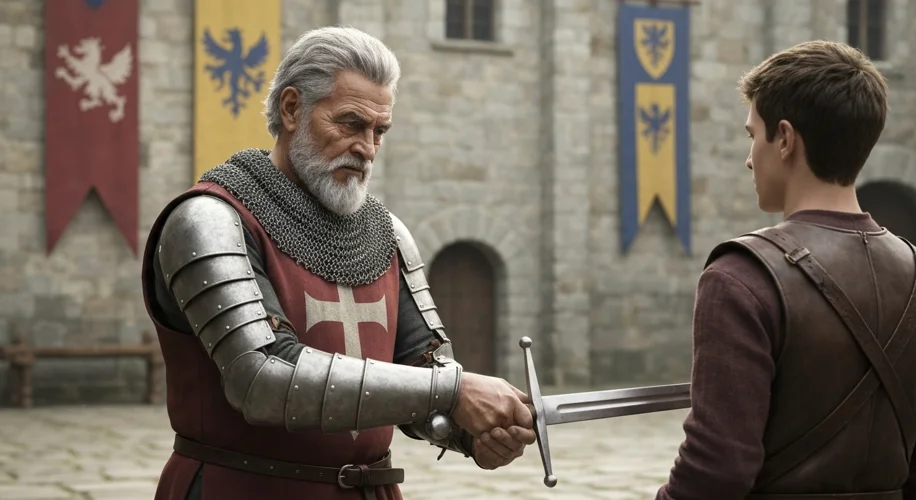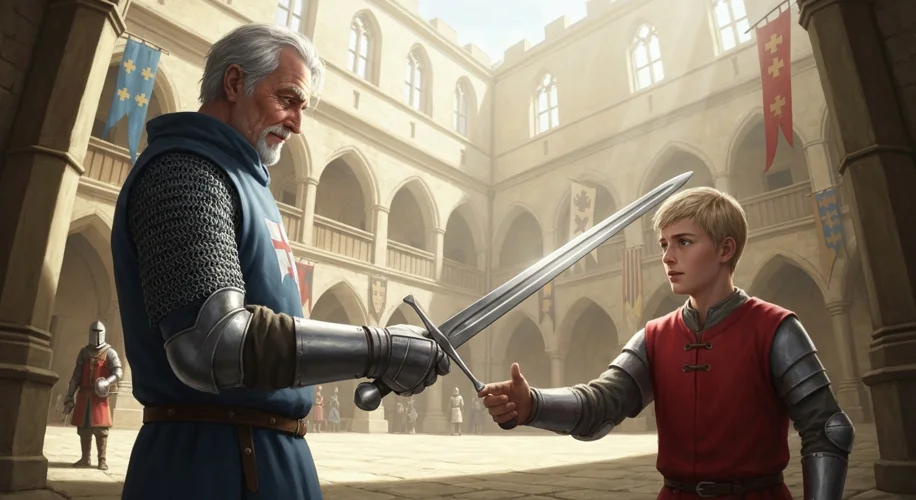The clang of steel, the thunder of hooves, the brutal ballet of battle – this was the life of a medieval knight. But how long could a man sustain such a physically demanding existence? When did the knightly career typically draw to a close, and what awaited him in his twilight years?
The image of the knight often conjures up youthful vigor, charging into the fray. However, the reality of a knight’s working life was far more complex, dictated by a grueling combination of physical exertion, societal expectations, and economic realities. Unlike many professions today with a clear retirement age, a knight’s “retirement” was often a gradual transition, heavily influenced by their ability to continue performing on the battlefield and their success in acquiring land and wealth.
The Demands of the Battlefield
Picture a knight in full plate armor, weighing upwards of 50-60 pounds. Add to that the weight of his sword, shield, and lance, and you have a man carrying over a hundred pounds of metal. Mounted on a warhorse, armored and armed, he was a formidable force. But this wasn’t a role for the faint of heart or the physically frail. Combat was intensely physical, requiring immense strength, stamina, and resilience.
Knights spent years honing their skills in the jousting yard and on the training field. These activities, while less lethal than actual combat, were still physically taxing and often resulted in injuries. Broken bones, concussions, and debilitating strains were common. As a knight aged, the toll of these accumulated injuries, coupled with the sheer physical stress of warfare, would inevitably begin to slow him down.
A knight’s career could span decades. Many began their martial training in their teens, and by their late twenties or early thirties, they were often in their prime. However, to remain effective in battle, a knight needed to maintain a high level of physical fitness. As the years went by, a knight might find it harder to mount his horse, wield his heavy weapons, or withstand the shock of a lance charge. The reaction times that were once lightning-fast could begin to lag, a dangerous liability in the chaos of battle.

Socio-Economic Factors: Land, Titles, and Legacy
While physical decline was a significant factor, socio-economic considerations played an equally crucial role in determining a knight’s active service. A knight’s status was inextricably linked to his land and wealth. Knights were part of the feudal system, obligated to serve their lord in exchange for land (a fief). This land provided the income necessary to maintain their expensive equipment, horses, and retinue of squires and servants.
As knights aged, their focus often shifted from active combat to managing their estates and ensuring the continuation of their lineage. Marriage and the production of heirs were vital. A knight might retire from the front lines to oversee his lands, collect rents, dispense justice, and train the next generation of warriors. This transition was less about a formal retirement and more about a strategic reallocation of his energy and resources.
Some knights, particularly those who had achieved great success and accumulated significant wealth, might continue to participate in campaigns well into their 40s, 50s, or even beyond. They could afford better armor, more skilled squires to assist them, and perhaps even lighter weaponry. However, for the majority, the increasing physical demands and the desire to secure their family’s future meant a gradual withdrawal from the most dangerous aspects of warfare.
The Transition to Other Roles
Retirement from active combat didn’t necessarily mean an end to a knight’s military involvement. Many older knights transitioned into leadership and advisory roles. They might serve as commanders of garrisons, trainers of new recruits, or advisors to younger lords and kings. Their experience and battlefield wisdom were invaluable, even if they could no longer wield a sword with the same ferocity.
Some knights, particularly those who had been wounded or had lost their capacity for heavy combat, might take up roles as castellan (commander of a castle) or seneschal (an administrative officer). Others might enter religious orders, finding a different kind of service in monasteries. For those who had managed their finances wisely, a comfortable retirement on their estates, overseeing their lands and enjoying the fruits of their labor, was a distinct possibility.
There wasn’t a single, definitive age for a knight to retire. It was a fluid process. A knight fighting in his late 30s might be considered experienced and formidable. By his late 40s, he would likely be seen as approaching the end of his peak combat years. A knight still actively charging into battle in his 50s was a rarity, often held in high esteem for his enduring martial spirit, but also perhaps a testament to exceptional health or a desperate need for his services.
In essence, a knight’s working life was a testament to endurance, adaptability, and the ever-present reality of mortality. The age of retirement wasn’t dictated by a calendar, but by the body’s ability to withstand the rigors of war, the dictates of feudal duty, and the enduring legacy a knight sought to leave behind.

